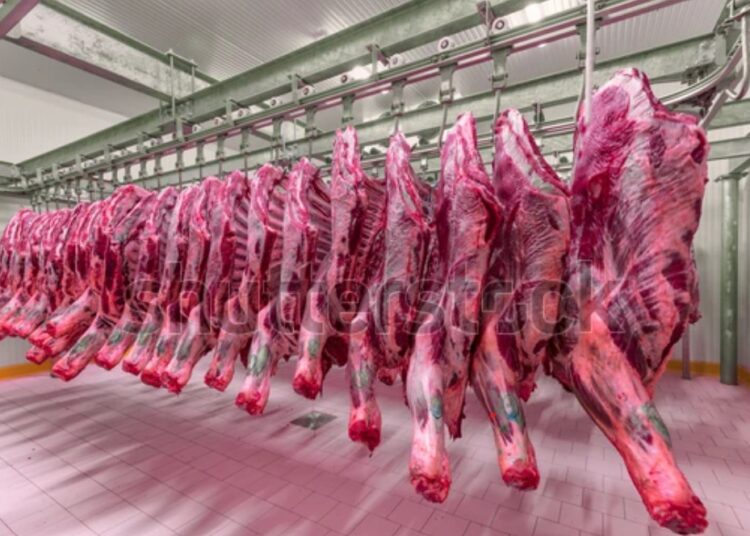As more and more employers hire underage workers, even for dangerous jobs such as meat packing and construction, child labor laws, one of the most sacrosanct pieces of legislation ever enacted, may be about to change.
Lawmakers are seeking to make changes at state and federal levels to roll back protections, expanding the types of approved work, the number of hours they can work and the time of day that would be permissible. They would even shield employers from liability for injuries, illnesses or workplace fatalities involving very young workers.
Critics say that such changes, will potentially “put kids in dangerous situations”. Child labor law violations have increased in the US, with a 37% increase in fiscal year 2022, including 688 children working in hazardous conditions, with the number likely much higher as the recorded violations stem from what was found during labor inspections. An estimated 300,000 to 500,000 minors work in the US agriculture industry annually, with 48% of all young worker fatalities between 2001 to 2015 occurring in the agriculture industry.
In a report on Saturday, the Department of Labor said “one of the nation’s largest food safety sanitation service providers employed at least 102 teens ages 13 to 17 for hazardous work on overnight shifts at meat-processing facilities.” The report goes on to state that, “children were found to be using caustic cleaning chemicals and cleaning ‘dangerous power-driven equipment, like skull-splitters and razor-sharp bone saws’”.
This was only one of many cases exposed over the past year: child labor was used in Hyundai and Kia supply chains in Alabama, at JBS meatpacking plants in Nebraska and Minnesota, and at fast-food chains including McDonald’s, Dunkin Donuts and Chipotle.
In what might appear to be a counterintuitive move, these increases in child labor violations are leading to legislative efforts to roll back child labor protection.
In Iowa, Republican legislators introduced a bill in January that would affect 14- and 15-year-olds.
“It’s just crazy to me that we are re-litigating a lot of things that seem to have been settled 100, 120 or 140 years ago,” said Charlie Wishman, president of the Iowa AFL-CIO, which is opposing the bill.
Wishman added: “All of these protections have been put in place for a reason. Child labor law is there to make sure that kids are working in age-appropriate work activities or occupations that are appropriate for their age. We think this is a rewrite of our child labor laws in Iowa that are going way, way, way too far and has the potential to put kids in dangerous situations.”

The bill would permit the director of Iowa workforce development or the Iowa department of education to grant exceptions from any provision that restricts the types of jobs 14- and 15-year-olds can do if the work is classified as part of a work-based learning program and also strips workers’ compensation rights for these workers.
“In the Iowa legislation, one of the provisions is to exempt employers from civil liability due to the company’s negligence. It is astounding that they would have the gall to knowingly acknowledge that more young people will be harmed, but focus on exempting businesses,” said Marcy Goldstein-Gelb, co-executive director of the National Council for Occupational Safety and Health.
Goldstein-Gelb explained that throughout her career she has worked with families and co-workers of young workers who have died on the job, oftentimes in violation of child labor laws that industry groups have fought to repeal, such as in a case where a 16-year-old in Massachusetts was killed in 2000 while operating a golf cart on the job.
Young workers have much higher rates of non-fatal injuries on the job and the highest rates of injuries that require emergency department attention, Goldstein-Gelb noted.
“I think there is this myth that you need to put young people in any possible job because there are openings. I think we are moving into a new age where we need to recognize that workers of all ages are seeking to earn a sustainable living and not put themselves in harm’s way,” added Goldstein-Gelb. “That’s why there are workers taking actions around the country…”.
Other states, such as Ohio, New Jersey and Minnesota, are currently or have pushed similar legislation to roll back child labor protections.
Advocates for legislative efforts to roll back child labor regulations have cited labor shortages, particularly in industries that rely on young workers, and have been strongly backed by the National Federation of Independent Business.
“We think these laws are really ill advised,” said Reid Maki, director of child labor issues and coordinator at the Child Labor Coalition. Maki added: “Now there are states that want to go back toward that direction to deal with labor shortages by using teens, even to the extent of placing them in dangerous work environments – [it] doesn’t make sense. It’s disregarding their welfare.”












